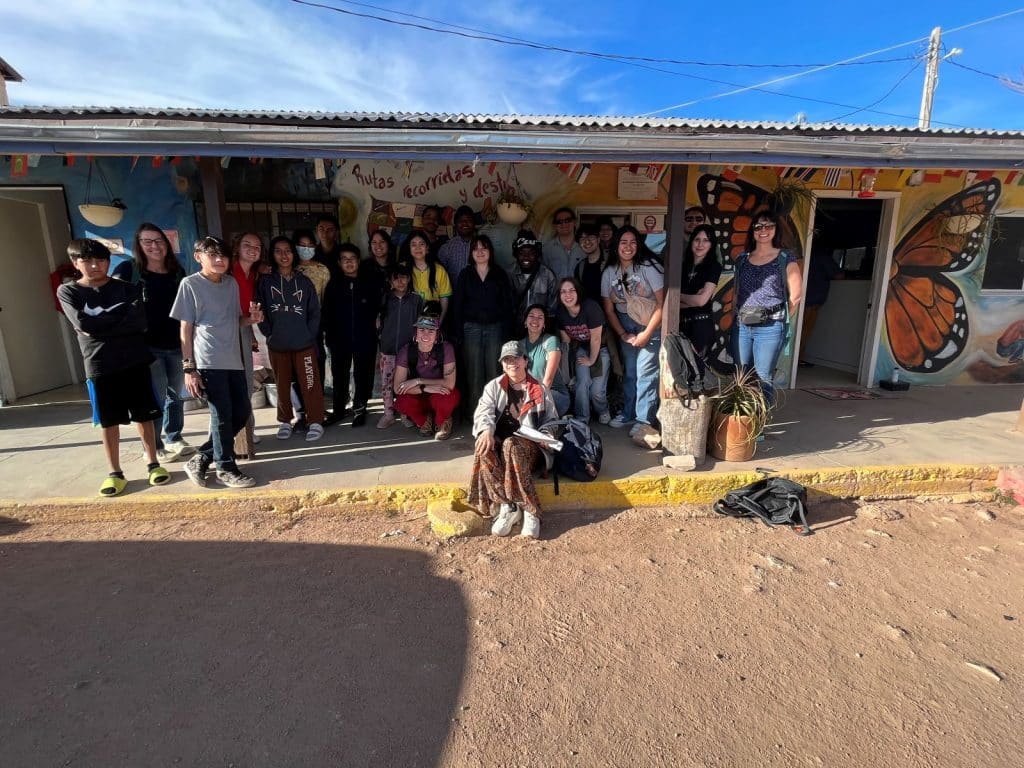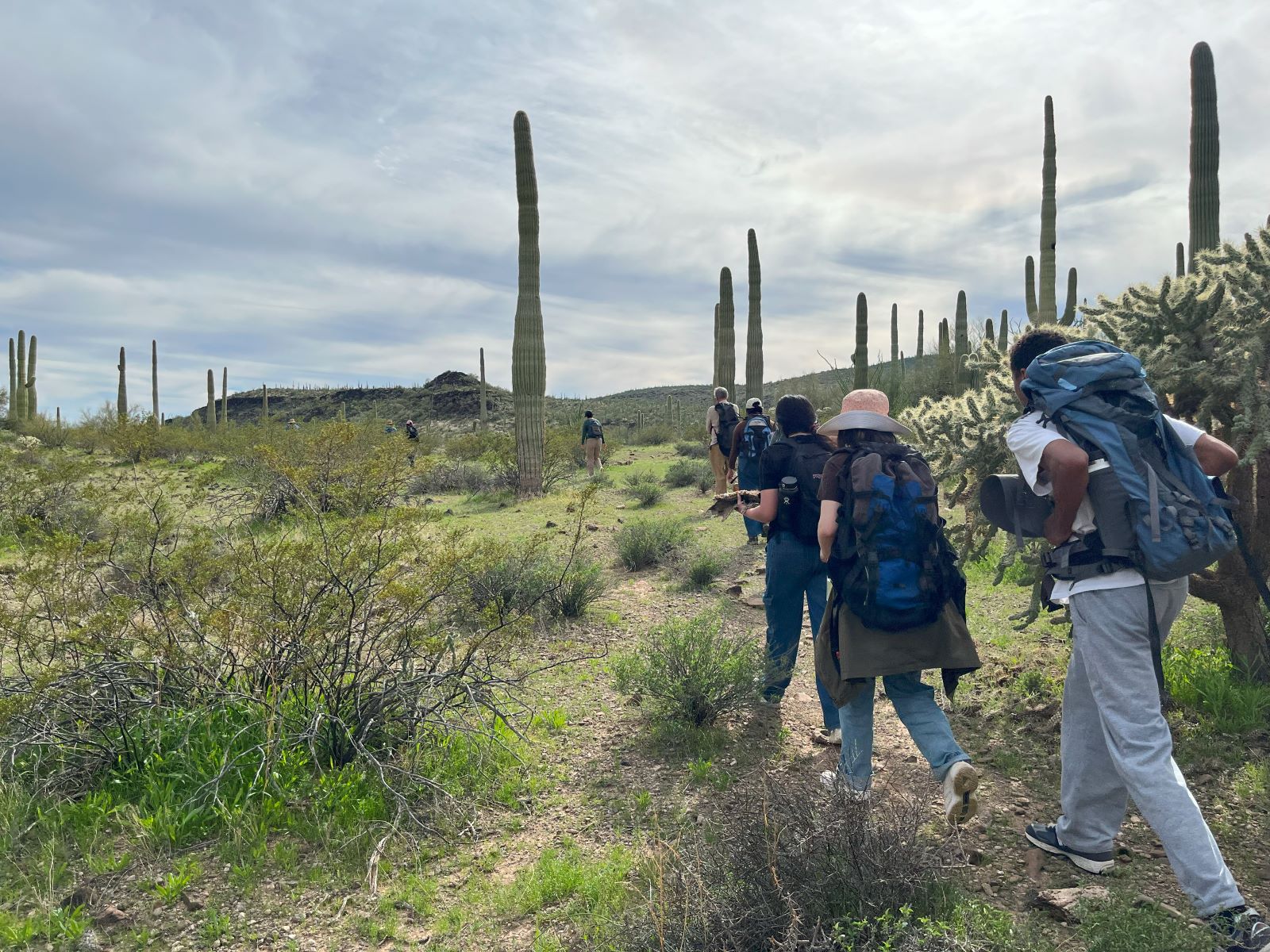*Editor’s Note: The “Views from NAU” blog series highlights the thoughts of different people affiliated with NAU, including faculty members sharing opinions or research in their areas of expertise. The views expressed reflect the authors’ own personal perspectives.
By Eileen Magaña
As part of the anthropology course Global Migration and Human Rights, taught by associate teaching professor Leah Mundell, 17 students took a field trip to the United States/Mexico border. Four students from the class—Eileen Magaña, Erik Martinez, Owen Stark and Calvin Humphrey—reflected on their experience in this essay.
How do you learn? It took the experience of a lifetime, our class trip to the U.S./Mexico border, to make us realize that you can only learn so much without seeing.
Throughout the course of the trip, we met with law enforcement, legal advocates, shelter residents and humanitarian aid workers in Tucson, Ajo, Nogales and Sonora.
The bulk of our time in Nogales was spent within the welcoming walls of the “Casa de la Misericordia,” or “La Casa,” as we started to call it. Converted from a local community center to a haven for those crossing the border, the only way to describe La Casa was beautifully loving. Even the flagpole flew not just the flag of Mexico but also the pride flag just below. La Casa was a hodgepodge of different buildings with a densely packed interior. From the basketball court and play structures to the community garden, La Casa felt so lived in. It became immediately clear that La Casa was more than a shelter—it was a home.
We made individual connections while visiting La Casa. Hearing stories from the very people it affected had a serious lasting effect on all of us. Despite language barriers and age gaps, we all made connections that emphasized our shared humanity. The ride back to the crossing had a different feeling than when we came down; it was more somber, quieter and as we made our way through the winding rickety streets of Nogales, we thought of those we met and what their futures might look like. Would they make it? What happens if they do? Will we ever get to talk to them again?
Following the visit to Nogales, our class spoke to Mike Wilson, a human rights activist and pastor from the Tohono O’odham Nation. He gave us a powerful lesson on moral obligation and the struggles of providing support for migrants on their journey. Mike made many connections between religious beliefs and his humanitarian beliefs. He also expressed his feelings about Border Patrol to the class: “When we take humanity out of either side, we lose the ability to solve such complex problems.”
A presentation by Border Patrol had been the very first stop on our trip. Some of the students had grown up along the border, others had been made aware due to living in the state of Arizona and some knew about it because of the work that they do for a living. For the rest, Border Patrol was a place that directly conflicted with individuals’ ideas about migration and the policies and attitudes surrounding it. For one of the students, a very impactful part of this trip was discovering and realizing how much surveillance from the State there truly is. For some of the students who did not grow up around the border, the hyper-militarization of it had been an incredible shock. Further, watching a presentation and touring the Border Patrol Facility revealed a lot about how the government as a whole has the means to watch our everyday lives.
Our trip to the border concluded with two full days in Ajo, Arizona, where we learned about and participated in humanitarian aid work in the Sonoran Desert. The class learned firsthand how civilian organizations aid migrants in their often life-threatening journeys to cross the border. One of the most impactful and powerful explanations that the facilitator shared with us was, “It’s more than civil disobedience where we are purposefully breaking the law to disrupt the systems in place. Instead, we practice direct action. Instead of prioritizing the law and systems, we choose to help other people for the sake of humanity and their dignity. The only way we can continue this work is if we play within the lines in the sand.”
Participating in water drops with the Ajo Samaritans was an experience that left a lot of the students yearning to do more fulfilling aid work. Although the trip and many organizations that combat the humanitarian crisis at the southern border are located extremely close to the border, it does not mean students and community members cannot help from northern Arizona. NAU has its own No Más Muertes chapter that focuses on political education and organization around not only the problems faced at the border but also local issues within the Flagstaff community. NAU No Más Muertes is not only a community-action-based club on campus, run entirely by NAU students, but it is also incredibly welcoming to members of the larger Flagstaff community who want to get involved.




